Getting Your Snake Plant to Bloom: The Mystery of the Elusive Snake Plant Flower Unveiled
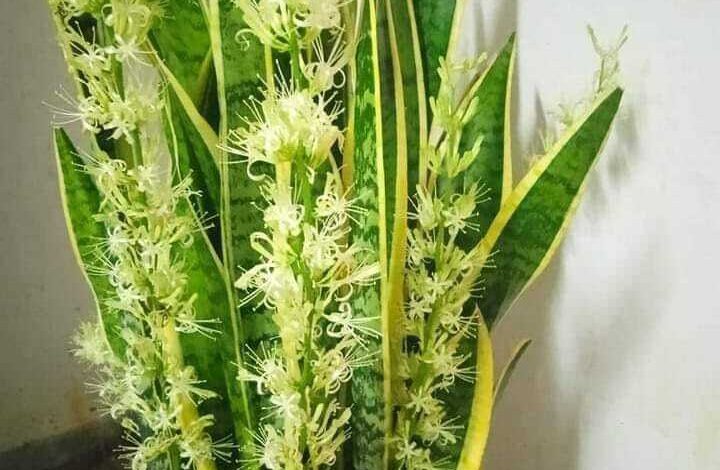
Sansevieria, widely known as snake plants or mother-in-law’s tongue, has become an integral part of indoor gardening. Their architectural beauty, coupled with their resilient nature, has made them a favorite amongst plant enthusiasts.
But what’s truly captivating is their ability to bloom, a phenomenon that’s rare and captivating.
Here’s an in-depth look into the snake plant’s flowers, care, and tips to entice it to bloom.
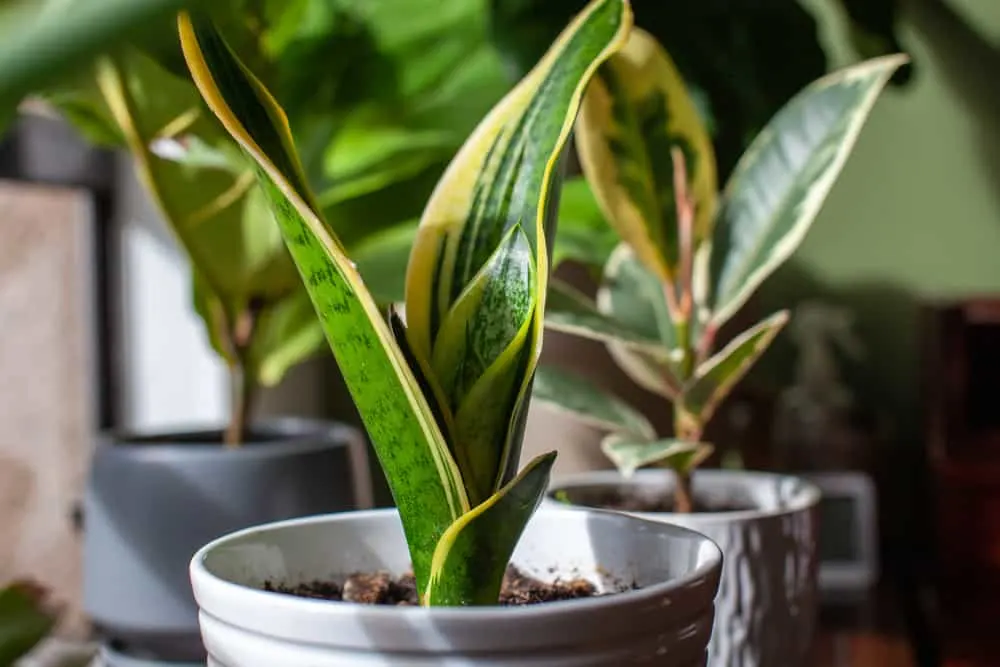
The Sharp Allure of Snake Plants
Aesthetic Appeal:
The aesthetic allure of snake plants lies in their sharp, structural leaves. With edges that may be colored in yellow or jagged lines, they present an intriguing visual. They’re not only adored for their striking appearance but also for their easy-going nature, adapting to most indoor and outdoor conditions.
The Mysterious Flowering Event:
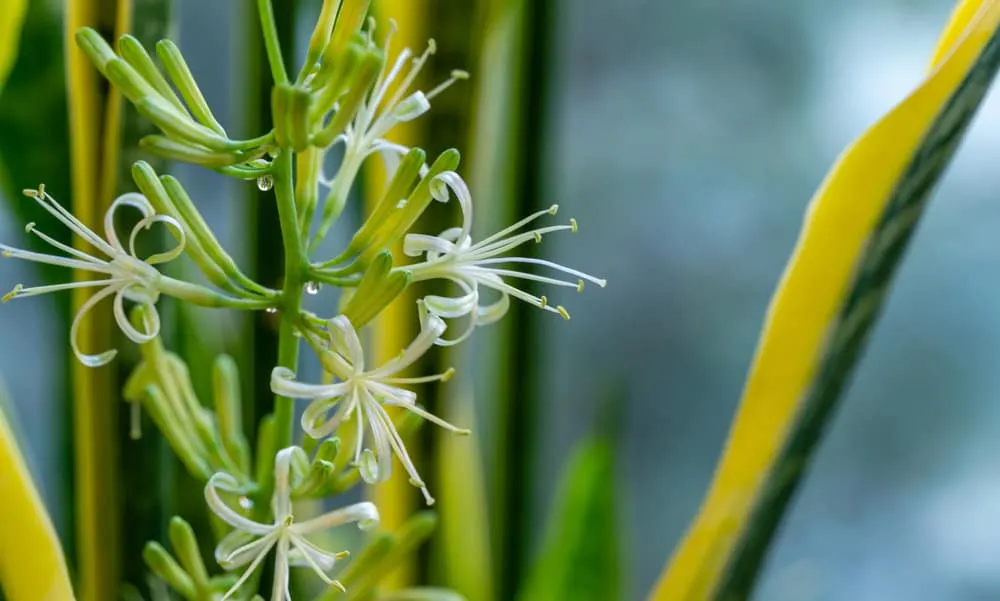
What makes the snake plant exceptionally unique is not merely its looks, but the mysterious and elusive flower that it can produce. Some varieties might never bloom at all, while others might surprise you with a delicate white flower amidst the leaves.
Understanding the Snake Plant Flower
Characteristics:
On the rare occasion that a snake plant flowers, it grows small buds along a tall flowering stalk, reaching up to three feet in height. These stalks may bear dozens of small tubular flowers that resemble honeysuckle or small lily flowers. Some varieties have flowers that bloom in large clusters at the plant’s base.

Colors and Contrasts:
The flowers of different snake plant varieties can range from white or cream to greenish-white or even yellow. These flowers offer a stunning visual against the contrasting leaves.
Blooming Period and Longevity:
Snake plants usually bloom once a year, typically in spring, lasting a few weeks. They may even develop berries as they die back, but rest assured, the plant itself will not die once it’s flowered.
How to Make Your Snake Plant Flower

Coaxing your snake plant into blooming is an intriguing challenge. Several factors can influence this phenomenon:
Light Requirements:
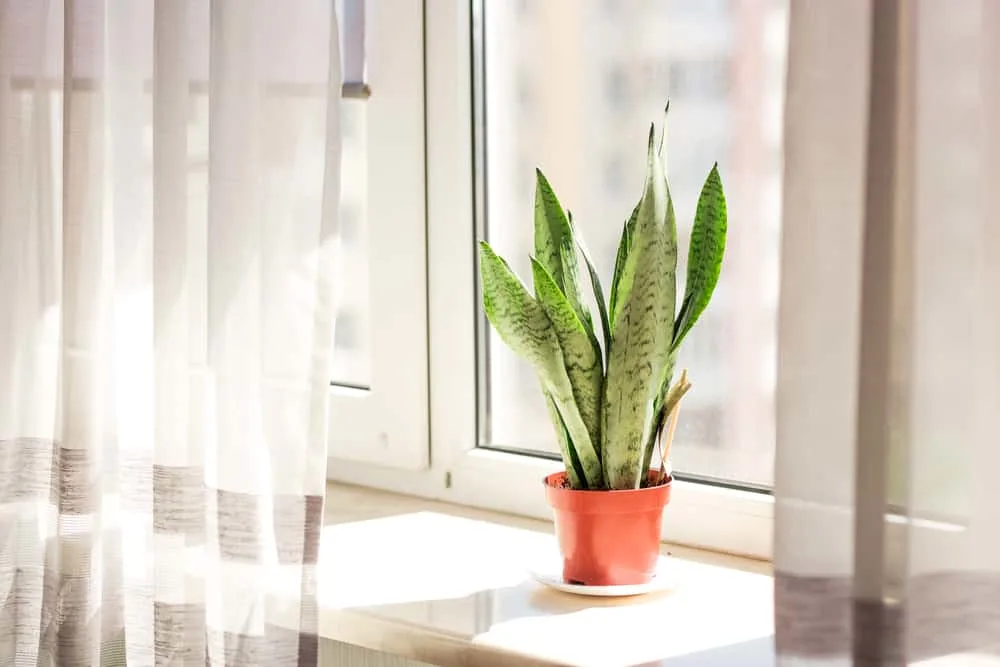
Snake plants can grow in various lighting conditions. However, they prefer a steady stream of indirect sunlight. A well-lit space encourages the plant to bloom, so placing it near a sheer curtained window could increase the chances of flowering.
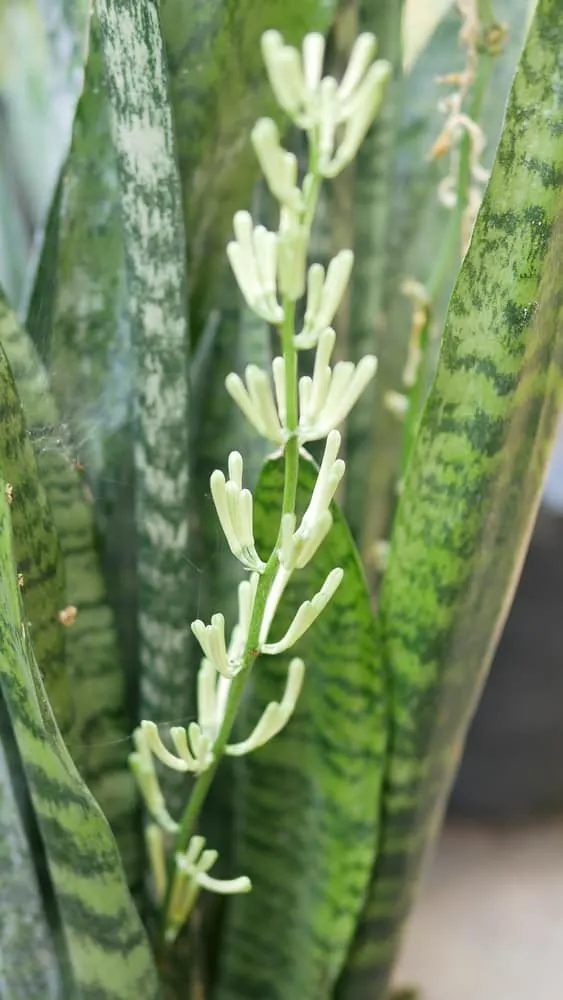
Watering Considerations:
Snake plants are semi-succulent and store water within their leaves. Overwatering can harm them, while extended drought periods can be detrimental. The key is to water only when the soil feels dry. Some believe that minimal watering stresses the plant enough to trigger blooming.
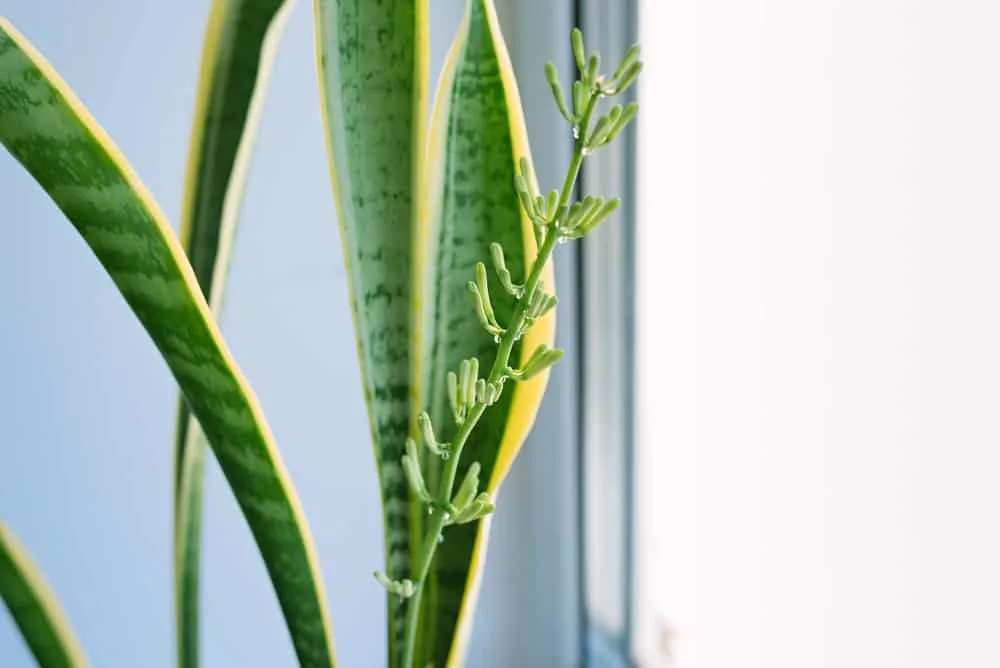
Soil and Nutrients:
The soil for snake plants should be light and well-draining. Adding river sand to the potting mix can improve drainage. Though they don’t usually require extra nutrients, a touch of high phosphorus fertilizer might boost flowering.
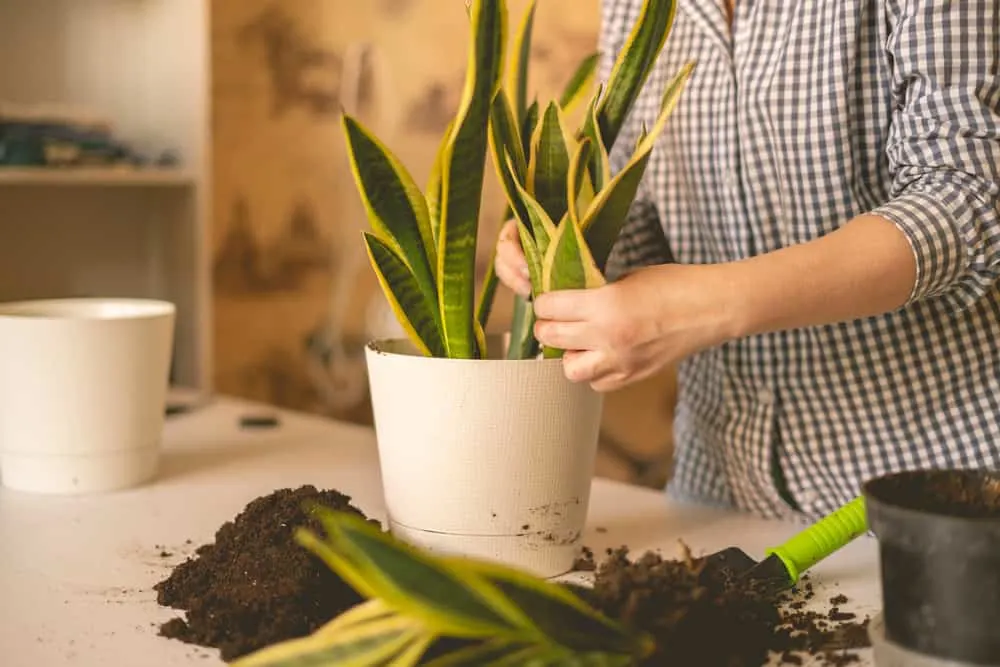
Temperature Preferences:
Native to West Africa, snake plants favor tropical-like conditions. Outdoor plants must be protected from temperatures lower than 50F. While some stress might induce blooming, exposure to freezing temperatures could be harmful.
The Impact of Age:

Older, more established plants have a higher chance of blooming. If they become pot-bound, the reduced space might cause the plant to shift energy from leaves to blooms.
Embracing the Rarity of Snake Plant Flowers
The fact that snake plants can flower is so uncommon that many are unaware of this phenomenon. These captivating blossoms might appear out of nowhere or for no clear reason. While they require little care, some believe that a certain amount of neglect might be beneficial.
However, it’s essential to remember that the flowers produce a strong aroma and thick, sticky nectar that might attract pests. Despite this, the rare blooming of a snake plant is a true delight for any plant lover. Through understanding, patience, and a blend of light and stress, you might be rewarded with those sweet, elusive white blooms. In the grand scheme of plant care, snake plants’ blooms are emblematic of the unexpected joys that gardening can bring.




